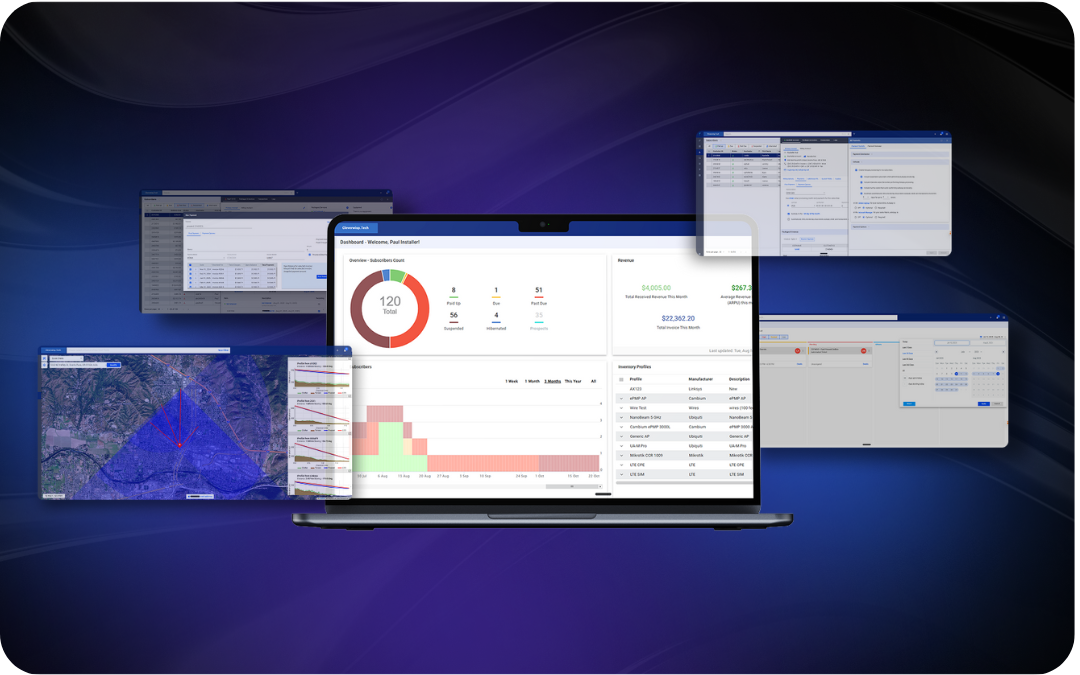Step 1: Seize the Opportunity
Understanding the difference between responding to an opportunity and seizing an opportunity could be your first step in breaking through the ceiling that blocks your growth.
Growing up in rural America, I learned to do everything for myself and spend as little cash as possible. It was hard to hire someone to do something I could do myself. I’ve heard it called “missionary mindset.” I suppose it was due to lacking both money and faith in delegation.
It may have been good training but it wasn’t profitable, it was just cheap. However, the more I compare WISP operations, the more I realize this mindset is a common hindrance to WISP success.
I believe it is an entrepreneurial tendency to be self-reliant to a fault which halts your growth because eventually you become your company’s biggest bottleneck.
I’ve helped many WISPs with poor cash flow, a small user-base and high support requirements turn the corner. Developing WISP profitability is my passion. In fact, the aligned interest in cultivating client success is the primary reason I joined the Visp.net team, so stay tuned for more helpful information and be sure to browse the WISP Success Blog regularly.
How to Improve your Cash Flow
Cash flow is a common problem for small businesses in every industry. To improve your cash flow in our unique industry, there are three areas which need special attention:
- Borrowing and lending
- Infrastructure investment
- Relationships
Manage your borrowing and lending
If you provide postpaid services then you are lending to your subscribers. If you can afford to lend money and it increases your profitability, then it might be the right thing to do.
However, in most cases, providing postpaid Internet is not only unwise but it allows customers to accrue debt which can end up unpaid. Unpaid debt increases cancellations, which not only means you delay your income but you will never recover the income from the services you’ve already provided.
In most cases, prepaid services are not only an acceptable but preferable way to sell Internet.
This is like getting a free 30-day loan from your customers.
In addition, you may find it helpful to grow faster with borrowed money. Be thoughtful if you borrow to grow your WISP. Credit card debt and venture capital are most likely the easiest and most costly options. Bank loans and leases are generally lower-cost ways to grow when using someone else’s money.
Know the Return On Investment (ROI) and the true cost of ownership to understand whether borrowed funds will drive growth or create enslavement.
Invest in your network
When you install hardware, build processes and train employees, you are developing an investment instrument which returns monthly dividends. After all, building a WISP is a complex process which culminates in collecting residually-paid invoices.
A common mistake is attempting to improve cash flow by cutting install costs to the point that you compromise your network capacity, quality and/or support costs. Reducing your network’s quality or capacity backfires by minimizing your investment’s value. In reality, increasing your services’ quantity and value is more profitable than reducing one-time costs. Keep in mind that reducing waste is good, but being cheap weakens your money-producing assets. It is almost never a good idea to embrace a one-time savings and increase long-term costs.
The principle is simple. In order to make wise network investments, you need to put your cash into things that reliably put money in your pocket.
Smart WISP Investments
Where you put your money impacts your ROI — here is a partial investment list that usually helps improve customer retention and reduces waste, which creates profits:
Take the time to plan. Free tools such as Cambium’s LinkPlanner are a good start.
- Invest in equipment that can scale to meet your network demands.
- Study market research to know the demand for services.
- Reach out to potential customers through marketing so they understand your offering.
- Use systems that watch your network health.
- Plan on low latency infrastructure with fiber and licensed backhauls.
- Build route redundancy and power backup systems for each pop site.
- Focus on QoE to improve your customer’s experience.
- Get uplink redundancy and, when possible, peer at an IX (Internet Exchange).
- Invest in professional installations including proper NEC 810.21 compliant grounding with surge protection.
Investments You Can Do Without
- Skip systems that don’t scale well due to manual customer provisioning. Systems like QuickBooks are great for accounting but they don’t scale well when you need automation and provisioning.
- Skip trying to save pennies by underbuilding PoP sites, instead put the time in to acquiring subscribers to justify building quality PoPs. Reduced network capacity and increased time for rework cost more than doing it right the first time. Your customers have high expectations and losing them is more costly than you think.
- Skip purchasing undersized install vehicles. An ideal install vehicle is half-ton or three-quarter-ton pickup truck (like an F-150) with a commercial equipment toolbox topper, ladder racks and possibly a pull-out bed. I’ve seen undersized vehicles wear out early and continually cost installation time as employees have to fuss around in the back of a minivan or hatchback car. The total cost to your business is often higher with undersized install vehicles.
Bolster your resources
Chronic cash flow problems are often caused by relying on the wrong people or the wrong service providers. Your success is directly relative to your company’s competence in the following areas: technical, financial and service. As a business owner, your primary job is to make sure these essential areas are well cared for. Nobody is best in every area but you shouldn’t give up on achieving excellence.
Be honest with yourself when you answer these three questions and consider which relationships can help in these critical areas.
- Is your money management optimal?
- Are your employees the right people in the right positions?
- Is your success the primary concern of your service providers?
Change isn’t easy but improving your results requires making improvements in key areas. The good news is that enhancing your ROI doesn’t need to be painful.
The core decisions to maximize your success aren’t always comfortable. You may question whether your money management decisions are optimal, or whether you’re hiring the right employees or firing the wrong ones, or whether changing a provider is the right decision — but they have to be made for your WISP to be profitable.
Now that we’ve covered basic elements that help improve your ROI, are you ready to improve your subscription business?
Want to take a deeper dive into WISP profitability? Read Part 2.
Joshaven Potter supports and consults with Visp.net’s clients to drive their success and business growth. He is an industry-leading WISP consultant with 18 years of ISP network experience.
Thank you to Sam Truong Dan (Tip Jar) and William Iven (Reports) for the images in this post. Find more of their work at Unsplash.com.












